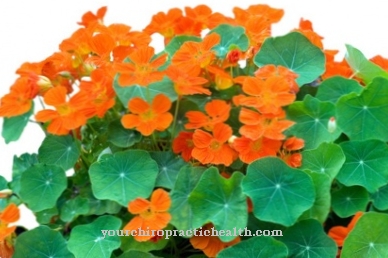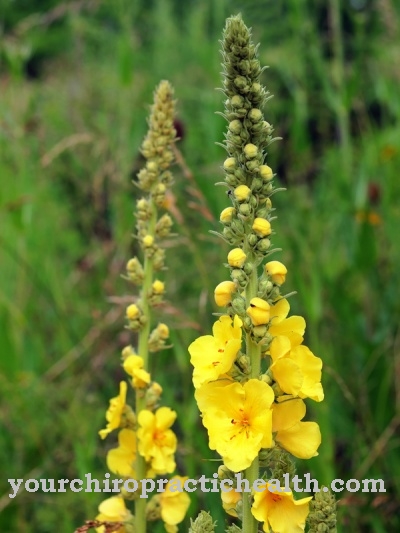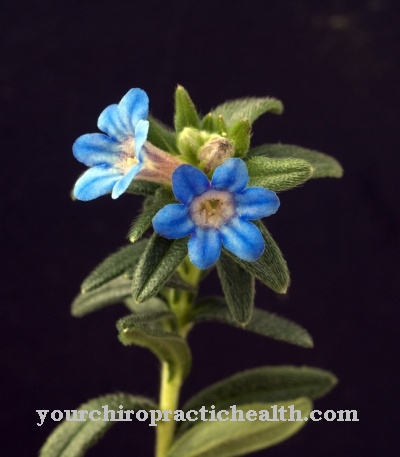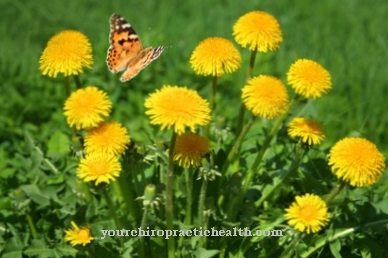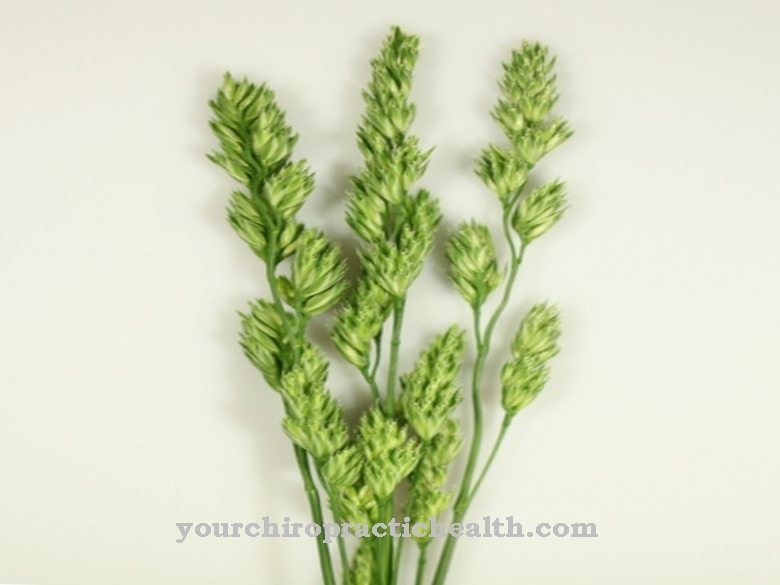The Sweet chestnut, also Common chestnut called, is a tree native to Central, Southern and Western Europe. The sweet chestnut is known for its edible fruits, which are also known as chestnuts. In traditional medicine, the leaves of the sweet chestnut are used in addition to the fruits.
Occurrence and cultivation of the sweet chestnut

The deep green leaves are serrated on the edge. The yellow inflorescences are up to 25 centimeters long and catkin-like. The chestnuts, which are surrounded by a spiky shell, develop from the flowers in autumn. In this fruit bowl there are two to three of the brown, shiny nuts. The fallen fruits are distributed in the area by forest dwellers such as dormice, crows, squirrels or jays and contribute to the spread of the sweet chestnut.
It can take 30 years for a tree to bear fruit for the first time. Sweet chestnuts can live up to 600 years. The chestnut tree of a hundred horses stands in Sicily. Its age is estimated to be 2,000 to 4,000 years.
Effect & application
The fruits of the sweet chestnut, the chestnuts, belong to the nuts. Compared to their relatives like walnuts or hazelnuts, chestnuts are mostly made up of carbohydrates and not fat. They also contain high-quality protein and numerous trace elements such as calcium, iron, magnesium, manganese, copper and potassium. Vitamins E, C, provitamin A and various B vitamins are also part of the chestnuts. Their energy content is quite high at 220 calories per 100g.
Today chestnuts are one of the more expensive foods. They used to be the "bread of the poor people". Back then the nuts were dried and made durable. They were then ground and used together with other flours to bake bread. Even today, chestnut flour is still used in the kitchen. Roasted or cooked chestnuts are popular. Pureed chestnuts are part of desserts, pies or ice cream. In many countries chestnuts are traditionally served as an accompaniment to game or poultry at Christmas time.
As a rule, chestnuts are not eaten raw, the cooking or roasting process breaks down the starch contained in the nuts and the chestnuts are easier to digest. In addition, cooked or roasted sweet chestnuts taste much more aromatic. Only Hildegard von Bingen recommends the consumption of raw chestnuts if you have "heart pain". According to St. Hildegard von Bingen, the sweet chestnut is a universal remedy that is suitable for everyone.
For her, the nuts were used raw, cooked or ground in the treatment of mental weakness, concentration disorders or gout. Even the sweet chestnut wood was part of their medicine. The scent should be beneficial for the brain and people with venous disorders should make a stick out of the wood and carry it in their hand. This should warm up the hand and this heat should flow into the body and strengthen the veins and body strength there.
Even today, chestnuts are still used as a tonic for the nerves. This is probably due to their high content of B vitamins and phosphorus. In addition, they help you relax more with the amino acid tryptophan. The contained bioflavonoid rutin, which is also an ingredient of the horse chestnut, strengthens the walls of the veins and prevents inflammation. In addition, the nuts are said to have an expectorant and anti-inflammatory effect, which is why they are used in folk medicine for colds.
The contained tannins have an astringent effect, i.e. contract the mucous membranes and can thus alleviate diarrhea. Connoisseurs also enjoy the leaves of the sweet chestnut as a tea. Chestnut leaf tea contains a lot of tannins and other phytochemicals such as flavonoids, which are said to have an antioxidant effect.
As a sweet chestnut, the sweet chestnut is popular as a Bach flower. Bach flower essences are energetic agents that are mainly used in naturopathy. The Bach Flower Sweet Chestnut is primarily intended to help with despair and is therefore used for people who, for example, have suffered a severe stroke of fate and have lost all hope. So far, however, there is no scientific evidence for the effectiveness of Bach flowers.
Importance for health, treatment & prevention
The numerous health-promoting ingredients in nuts and leaves make the sweet chestnut an all-rounder in medicine. B vitamins and phosphorus strengthen the nerves, tryptophan soothes when there is tension, the basic nutrients regulate the acid-base balance, calcium and phosphorus strengthen bones and teeth and the bioflavonoids help with venous problems. Despite this wide range of effects, the sweet chestnut is rarely used in medicine nowadays.
In naturopathy, it is mainly used by the followers of Hildegard von Bingen's medicine. In modern orthodox medicine, the sweet chestnut, in contrast to the horse chestnut, which is used for venous disorders, does not play a role. The sweet chestnut is found more on European plates than in the medicine cabinet. But even there it unfolds its healing effect, albeit unintentionally, and also provides a culinary experience.


